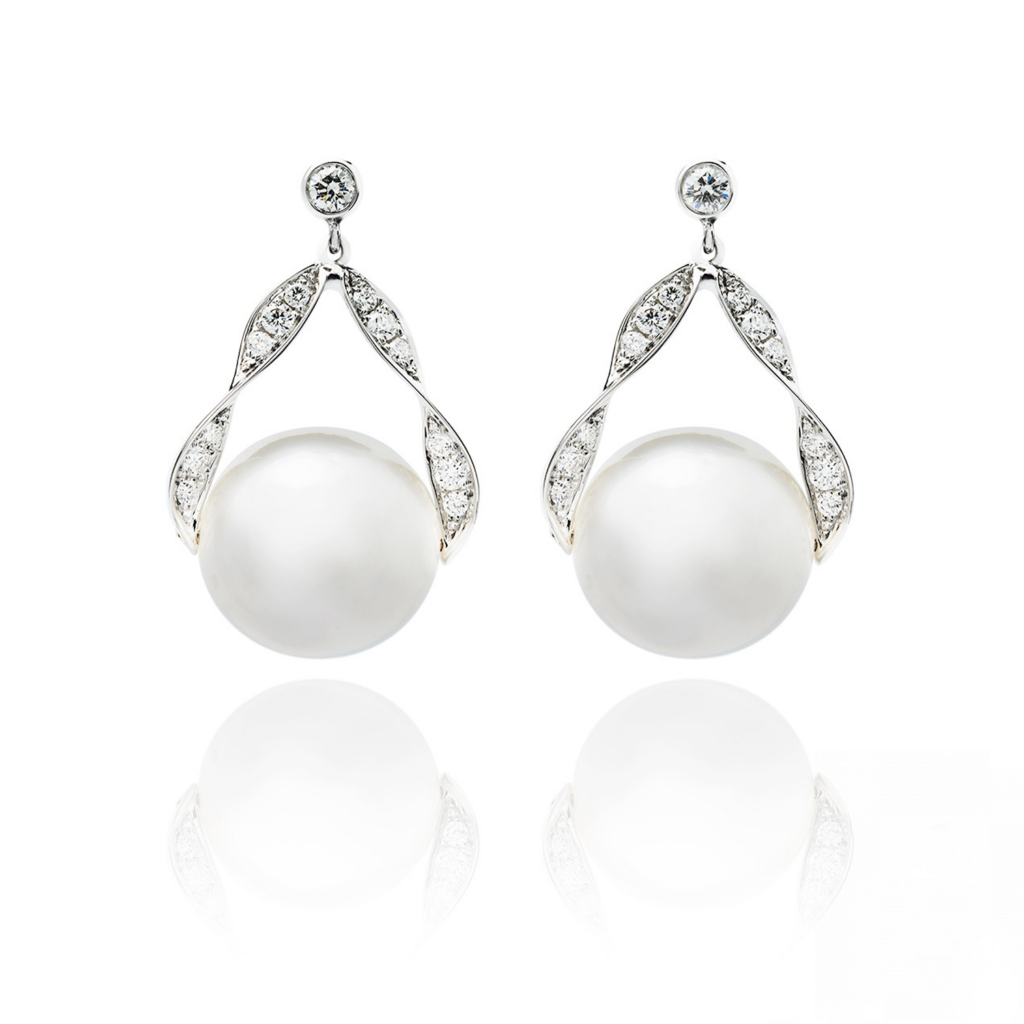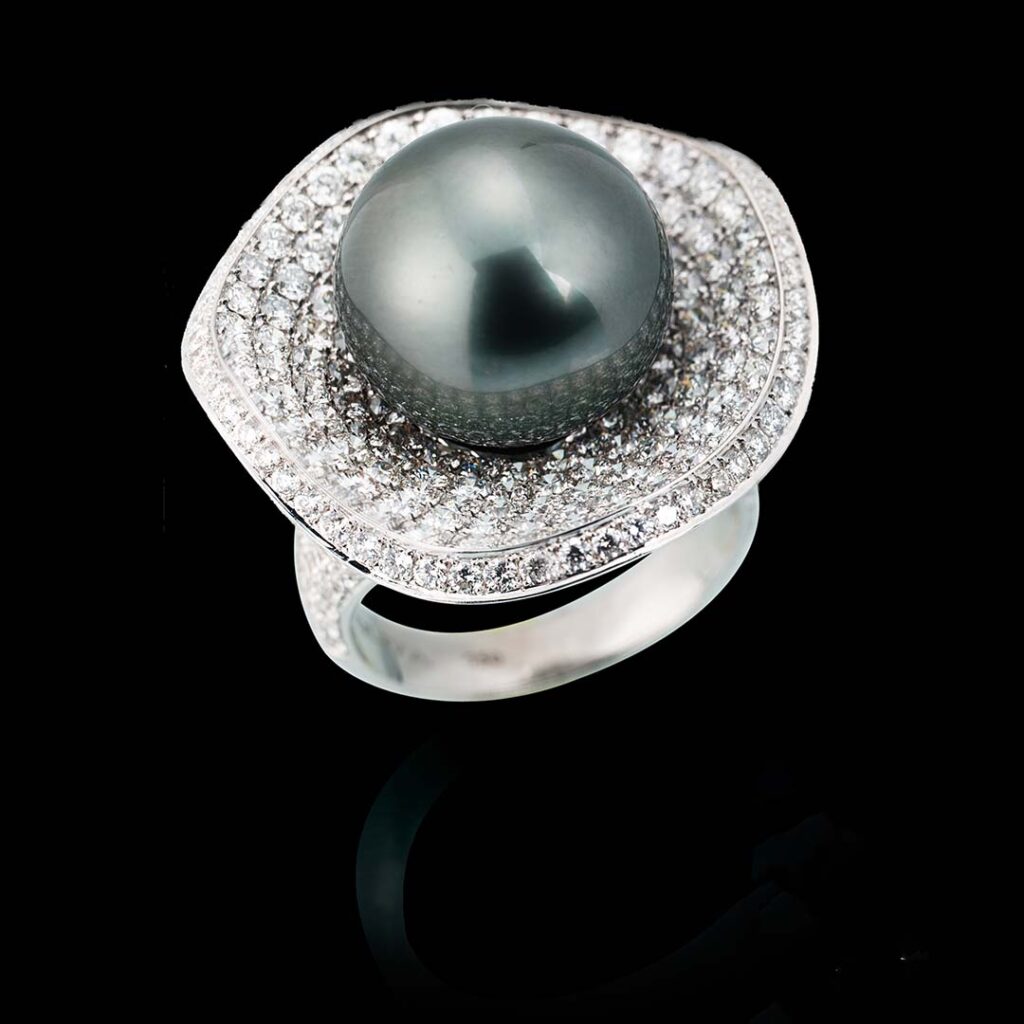The luminosity and luster of pearls along with the warmth they emit when worn against your skin has made pearls one of the most popular gems throughout history. While pearls are in abundant supply today, before the 1920s pearls were hard to come by. That’s because they were formed naturally by mollusks when they got an irritant in their shell. To relieve the annoyance from the intruder, the mollusk formed a coating of nacre over the offending invader which then formed a pearl. It was reason to rejoice when a natural pearl was found because they were so rare. Divers who hunted for these treasures often came up empty handed because it was hit or miss as to whether or not a mollusk would actually have a pearl.
Pearls were so hard to come by that at one time they were the rarest of all gems, reserved for royalty, but that changed thanks to a name that is familiar to many of us – Kokichi Mikimoto, a Japanese vegetable farmer turned pearl farmer. He is widely credited with developing cultured pearls. A cultured pearl is formed when a human places an irritant in a mollusk prompting it to create nacre that forms a pearl, rather than waiting for an act of nature as happens when natural pearls are formed.
How Cultured Pearls Started
Mikimoto was not alone in his quest to culture pearls. Two other visionaries in Japan also contributed to pearl farming: Dr. Tokichi Nishikawa, a marine biologist and Tatsuhei Mise, a carpenter. Both men, working independently of each other at around the same time in the early 1900s, came up with very similar processes to nucleate mollusks inducing them to produce pearls.
In 1902 Mise nucleated 15,000 mollusks, which two years later produced round cultured pearls. He applied for a patent and received the first patent for the production of round cultured pearls. Concurrently, Nishikawa was implanting oysters with nuclei and his method also produced small round cultured pearls. He was granted a patent for the implantation process. Both Mise and Nishikawa used similar nuclei to start the culturing process. Mise used lead and silver nuclei, while Nishikawa used gold and silver in his method. Their pearl culturing process was so similar that it became known as the Mise-Nishikawa method.
Meanwhile, Mikimoto was trying his hand at growing cultured pearls. He used mother-of-pearl as the nuclei in akoya oysters. Mikimoto patented his process in 1908. Four years later he tried the same method on pinctada margaritifera and pinctada maximus oysters. Mikimoto then tried using the Mise-Nishikawa method of nucleation and cultured pearls began to form. By 1921, cultured pearls were on the market. It’s one of the reasons that fashionable women of the Art Deco period were able to adorn themselves with long ropes of pearls, the gems were now readily available at an accessible price point.
However, like any new technology, cultured pearls had their critics. A London-based newspaper wrote an article claiming that cultured pearls were not “real”. The article triggered a dispute over the validity of cultured pearls that resulted in a lawsuit that drew international attention to these gems. Mikimoto won the lawsuit and cultured pearls were on their way to reaching a new popularity never experienced before due to their lack of availability and stratospheric prices.
Cultured Pearl Farms
Today, it is very rare to find a natural pearl unless it is vintage; cultured pearls rule the market. So how exactly are pearls cultured? On pearl farms — in oceans, rivers and lakes — baby mollusks are raised in large nets until they are mature enough to be nucleated, which takes about two years. Skilled technicians then gently and carefully implant a nuclei into the mollusk. From there the mollusk is placed back in the water.
The mollusks are nurtured in the water for anywhere from 6 months to a couple of years. The longer the mollusk remains in the water the larger the pearl. Some pearls are farmed in saltwater while others are farmed in freshwater. The type of water makes a difference in the way a finished pearl looks. Japan, Australia, Indonesia, Philippines and French Polynesia, which includes Tahiti, all produce saltwater pearls. These tend to be higher quality, better shaped and more lustrous than other pearls. Saltwater pearls tend to be white, cream, golden or gray.
Freshwater pearls are cultured in rivers, lakes and ponds. These pearls are mostly grown in China and they tend to have a thicker nacre than saltwater pearls. They are often slightly irregular in shape and don’t have the high luster that is so desirable in pearls. They do come in many colors and shapes.
Both saltwater and freshwater cultured pearls can be quite beautiful. It really comes down to how much money you want to spend and your personal preferences. With a wide array of cultured pearls on the market today, you’re sure to find something that suits your style.
Featured image (top of page): Cultured pearl necklace with a diamond and 18-karat gold bow, courtesy Paul Fisher, Inc.
Authored by Amber Michelle
All jewelry showcased in this blog is available on Jewelers Circle Pro.


